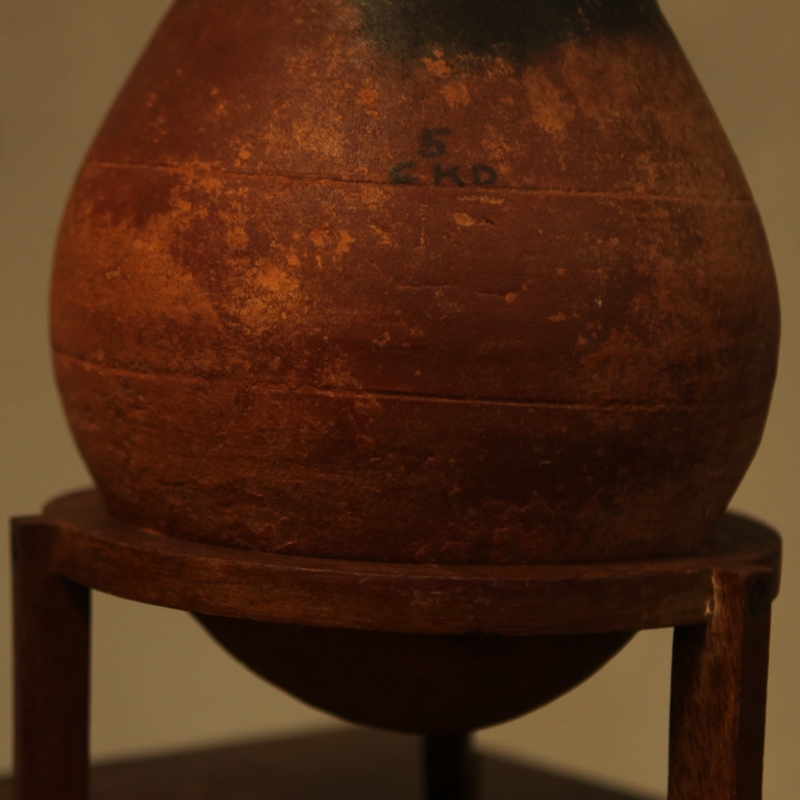Anna O. Shepard, US archaeologist, in the preface of her book Ceramics for the Archaeologist talks of ‘the ceramic technologist [as someone] who attempts to write a general book on ceramics and then finds himself in the position of a leopard who would like to hide his spots.’[i] Her words point to the need for clarity on archaeological ceramics terminology. Ceramics were once used as grave goods, unearthed from megalithic burials.
The term ‘ceramic’ is an umbrella term that includes all baked artefacts made of clay. Clay, the raw material for ceramic, has several constituents, including minerals. The clay found in different areas may have variations in their properties and in the percentage of each property. The composition of the clay lends a unique texture to each regional variety. The distinctiveness of the clay significantly affects the appearance of the ceramic when baked. For example, the properties of the clay have a significant role in determining the colour of the final product. Potters also add or extract different materials that contribute to the final appearance of the ceramic. They may add sand to the clay or remove pieces/particles of stone while preparing the clay. Archaeologists refer to the raw material in ceramics—clay—as fabric. Variations in fabric are the main reason for variability in ceramic texture.
Ceramics, particularly pottery, are considered the alphabet of archaeology. In archaeological practice, ceramics perform a determining role. The basic factors that need to be taken into account for ceramic interpretation are fabric and type. After quantification and primary documentation, specialists identify the fabric of each sherd and record its variability. Examining the fabric helps pottery specialists understand the provenance of the vessels and the method of manufacturing. Typology refers to the classification of artefacts according to their physical characteristics. The typology of artefacts can be indicative of their chronology and cultural similarity or uniqueness. Comparing different assemblages helps the archaeologists understand the spatio-temporal context of the artefacts. The analysis of ceramics throws light on several aspects, such as the technological advancement of time, distribution patterns, the functional context and deposition. The sherds can even tell us about the mobility of people and their ideologies. These factors contribute to our understanding of the economic and social dimensions of a past culture.
The phrase ‘grave goods’ refers to anything interred in the grave in addition to human remains. These could include personal belongings or objects deposited as part of the rituals, such as earthenware, metal objects and semi-precious beads. Unlike other archaeological artefacts, grave goods are direct indicators of the emotional landscape of human beings. As Harke rightly points out, ‘…burials would reflect not the realities of the lives of the people buried in them, but images of their lives and of their role in society in the minds of those arranging the burial and participating in the ritual.’[ii] Conventionally, burial goods are considered as indicators of a belief in life after death—it is believed that they enable a smooth afterlife. Archaeologists employ burial goods to reach inferences about the ethnicity, economic status, social status, gender roles and religious rituals of the people and society at that time. In short, grave goods play a significant role in burial archaeology, throwing light on the horizons of death and related rituals.
Grave goods have been found in the megalithic burials of Kerala. These include pottery; iron and copper objects; figurines; and beads made of quartz, carnelian, amethyst and terracotta. All these goods do not necessarily occur in a single grave. Certain types of graves, such as dolmens, hood stones and menhirs, are generally devoid of any grave goods. But in one instance reported in Marayur, a pot was unearthed from a menhir.[iii] Ceramics are among the most common grave goods found in the megalithic burials of Kerala. They can be divided into two types: pottery and terracotta figurines.
Pottery
Archaeologically, pottery can be described as fired vessels used for cooking, serving and storage. It is considered the most reliable tool for relative dating in archaeological research. Archaeological evidence shows that humans have been using pottery right from the Neolithic Period[iv], which followed the Mesolithic Period[v]; in South India the period began around 10,200 BCE. Pottery can be considered one of the earliest crafts that humans developed. This type of artefact is abundantly found at most archaeological sites. Unlike at other sites, one has a greater chance of recovering pottery in its complete form from graves, where vessels were deliberately deposited. Studied in comparison with potsherds from other archaeological sites, they can contribute towards a more comprehensive understanding of ceramic assemblages.
Pottery has been found in other parts of India as well, and is considered a chronological marker of the Early Historic Period. It mostly occurs in the form of bowls and pots. In some parts of India, these pots are russet coloured—hence their name. Such vessels, recovered from the megalithic burials of Kerala, are generally deep red, just like Red Slip Ware. They come in two varieties—Red Slip Ware and Black and Red Ware. A few vessels are ochre or russet coloured.
Traces in the pottery indicate that the potters of the Iron Age-Early Historic period used both wheel and handmade techniques. Ethnographic data throw light on both. While the handmade technique is still prevalent, the mechanised wheel is the more popular mode of production at present. The method may vary according to the workshop.
Based on its surface treatment, pottery can be divided into different wares. The primary benchmark for the categorisation of a ware is the slip—a coating applied to the pot after it is shaped. Pots can be produced with or without the slip. Those unearthed from the megalithic burials of Kerala can be broadly divided into five groups: Red Ware, Red Slip Ware, Black Slip Ware, Black and Red Ware (BRW), and Russet Coated Painted Ware (RCPW).
Red Ware
The term ‘Red Ware’ refers to pots that turn red after baking. These are devoid of any slip. They can appear dull or pale red depending on the properties of the raw material. The pots acquire a red colour due to the presence of iron oxides, variations in the concentration of these iron oxides cause variations in the shades of red. The Red Ware unearthed from Kerala was noted to have rough surfaces.
If we consider all the pottery unearthed from archaeologically excavated megalithic burial sites in Kerala, the number of Red Ware pieces is very less compared to other wares. Commonly found forms of Red Ware include bowls, pots and ring stands (see Fig. 1). While these are generally free of decoration, archaeologists have also found a few vessels with incised decoration. Incision is a method of decoration in which a sharp tool like a sharpened bamboo piece or iron wire is used to draw on the surface. These vessels mostly carry oblique lines and lunate shapes.
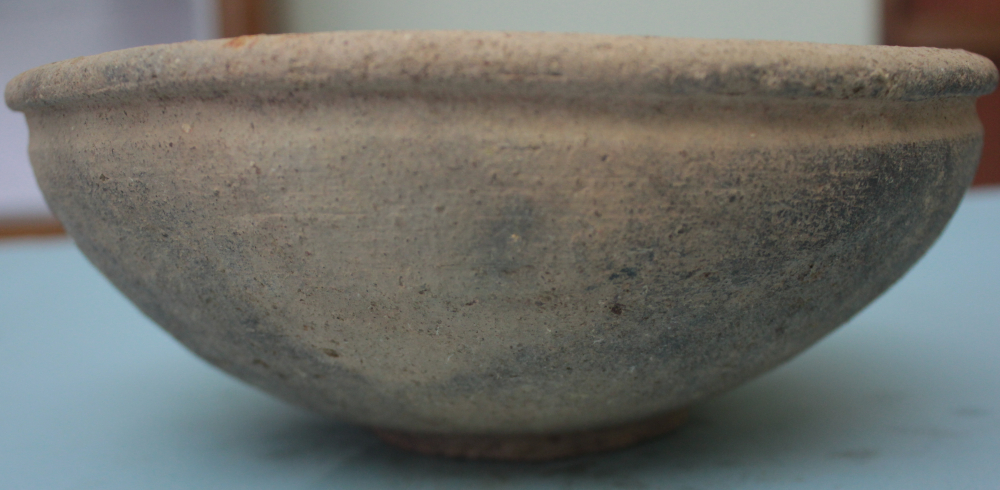
Fig. 1. Red Ware, Cheramangad, kept at the museum of theThrissur Circle of the ASI (Photo Courtesy: Jaseera CM, 2017)
Red Slip Ware
Red Slip Ware is characterised by the slip applied on its surface, usually by painting or dipping. Ethnographic parallels show that laterite stones are used to prepare the slip. Red Slip ware is the same as red ware, except that it has a red slip over the surface.
It hides the coarse nature, giving the surface a glossy texture. Red Slip Ware is a very common type of pottery found across cultures and in all burials with grave goods. It occurs in many forms, including dishes, bowls, pots, high-necked pots, jars and legged jars. Some vessels display incised decorations. People still use Red Slip Ware in their households. The major difference between contemporary vessels and megalithic burial vessels is colour, the latter are a deep, bright red.
Black Slip Ware
The vessels in this category have a black slip over their surface (see Fig. 2). They therefore appear glossy despite their coarse fabric. They are generally devoid of decoration. Contemporary potters also make Black Ware, but these do not have the same glossy appearance. The most common forms in this category are lids and ring stands (objects that are used to keep vessels stable and upright). Bowls have also appeared in the megalithic pottery assemblage of Kerala. Compared to other wares, there is little variation in form in Black Slip Ware found in these burials.
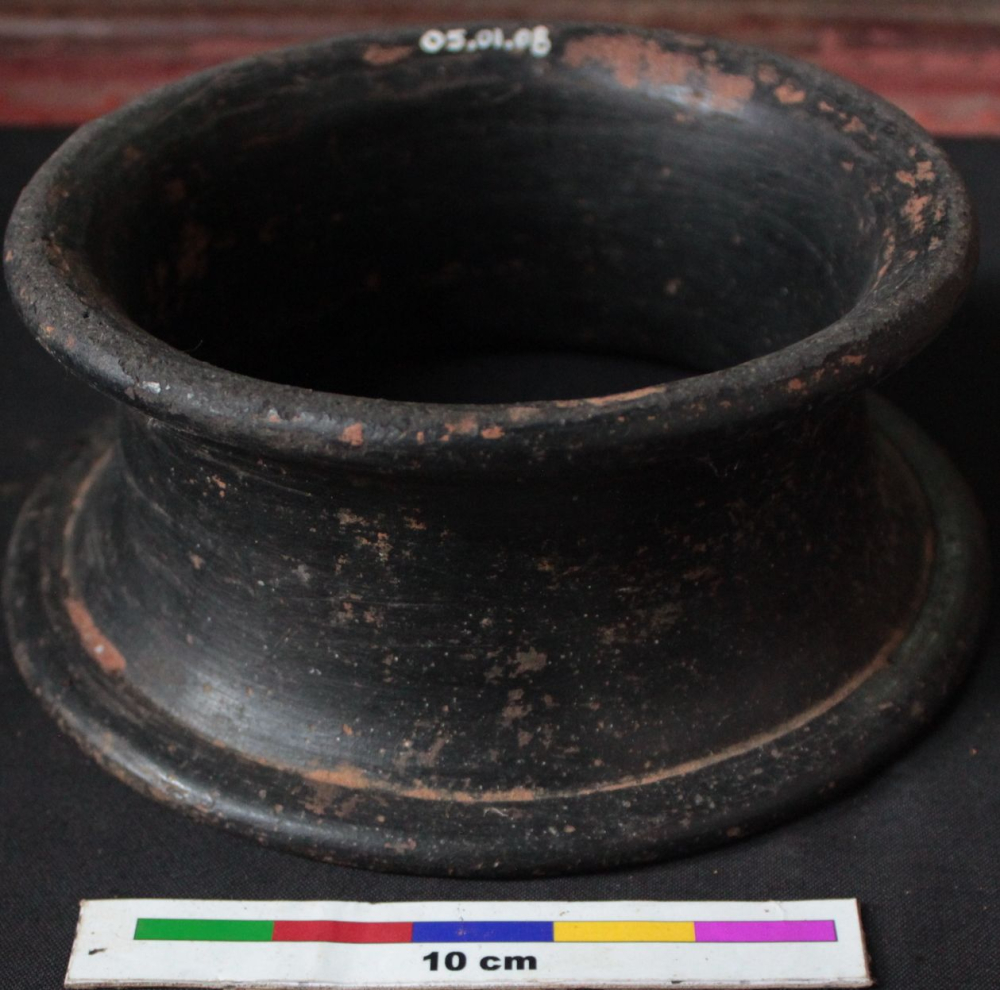
Fig. 2. Black Slipped Ware, Ambalamedu, Idukki District kept at the Musuem of the School of Social Sciences, M.G. University (Photo Courtesy: Jaseera CM, 2017)
Black and Red Ware
Owing to its dual colour scheme, Black and Red Ware is the best-known among megalithic burial pottery assemblage of Kerala. It is considered a chronological marker of the Iron Age-Early Historic period in South India. It has a black slipped interior and a red slipped exterior with a black top. In very rare instances Black and Red Ware come with painted decoration, the most common of which consists of dotted slanting lines. Tableware, such as dishes and bowls, form the dominant forms. A few pots have also been found at the megalithic burial sites of Kerala. One interesting form of pottery from this category is a bowl on a stand (see Fig. 3).
There are different views on the technology used in the production of this ware. One is that the double colour is achieved by invert firing—a process by which the vessels are fired by placing them upside-down in the kiln. Another view is that the dual colour is a result of double firing. In the first round, the pots become black; and in the second round, they turn red. The arrangement of vessels in the kiln helps keep the rim and interior black. These views are still to be supported with more experimental studies. Black and Red Ware has been reported from all over India, right from the Chalcolithic Period. Several scholars argue its use and spread as a result of migration. Champakalakshmi, for instance, points out that migratory communities were responsible for the expansion of Black and Red Ware to the South.[vi]
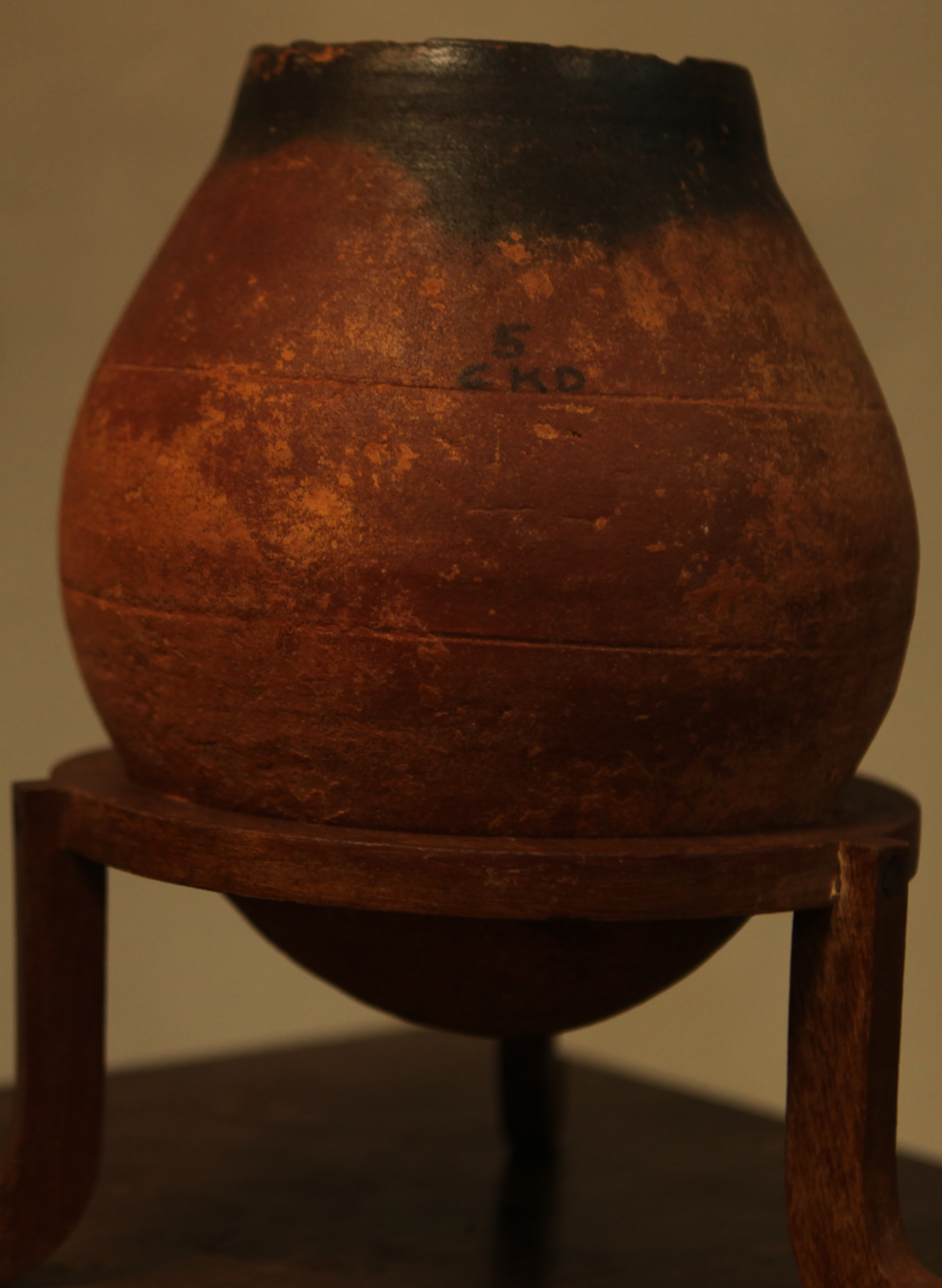
Fig. 3. Black and Red Ware, Chekkad, kept at the Shaktan Tampuran Museum, Thrissur (Photo Courtesy: Jaseera CM, 2018)
Russet Coated Painted Ware
The characteristic feature of this ware is the white painting on the body of the vessels. The painting is executed after shaping the vessels; a slip is then applied over the surface. The designs are typically wavy lines, concentric semicircles, loops and straight lines. Wheeler reported its first occurrence in South India in pottery found in Brahmagiri.[vii] Having first noticed it in the Andhra region, he named it ‘Andhra Ware’.
Urns
An urn is a large terracotta vessel with a bulbous body and tapering base found interred in a pit (see Figs 4 and 5). Urns are either used to enclose other grave goods, such as bowls, pots, beads and bone fragments, or are simply interred into the grave. They may be with or without the application of slip. Urns are completely handmade products. Some of them have simple incised or appliqué decoration. Appliqué is a decoration method where a strip of clay is attached to the body of the vessel. The most common appliqué design is a chain pattern made by thumb impressions on the added strip of clay. Incised designs consist of oblique lines, zigzag lines and lunate designs.
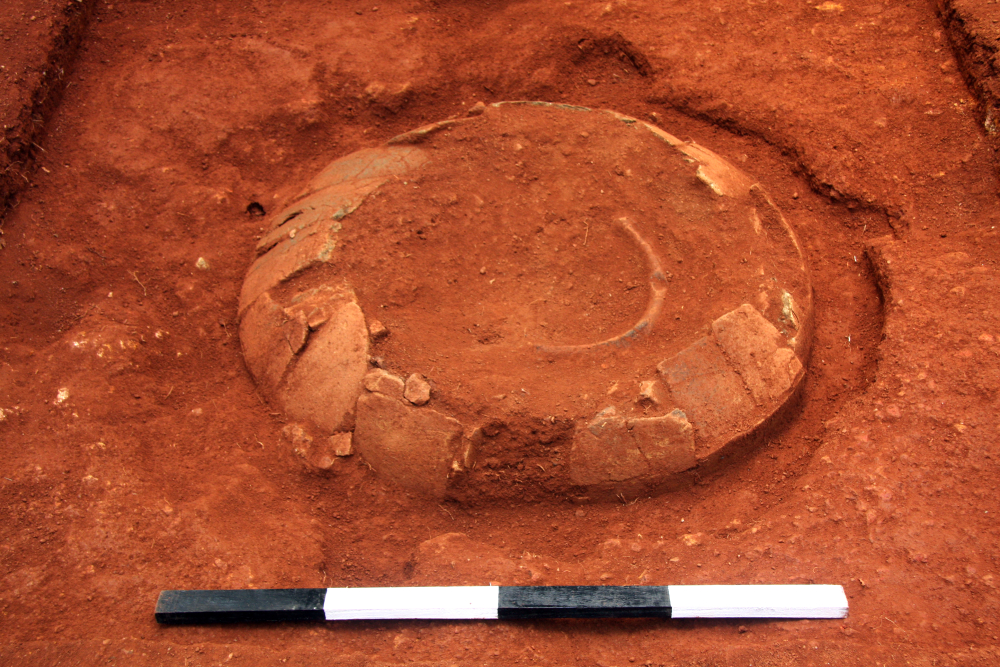
Fig 4. Urn Burial, Anakkara, Palakkad District (Photo Courtesy: Mohammed, 2008)
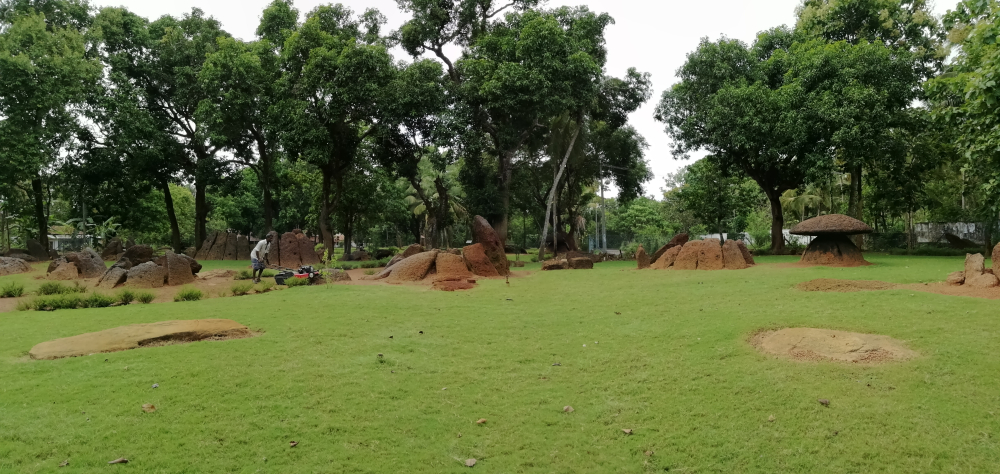
Fig. 5. Kudakkalparamb, Cheramanangad, Thrissur District (Photo Courtesy: Varghese, 2018)
Terracotta Figurines
The term ‘terracotta’ literally means baked clay. Terracotta figurines are one of the less comprehensively understood categories of artefacts. What is their purpose? There is no single answer. In the contemporary scenario, figurines are made as works of art. Ethnographic exploration tells us about their use as offerings in temples. They are also used as toys or show pieces. In the Iron Age-Early Historic Period people would deposit them in graves. However, terracotta is not a common grave good; very few sites report their presence. Most figurines unearthed from megalithic burials represent animals, both domesticated (most often cows and bulls) and wild (such as boars). Terracotta figurines as grave goods have been largely reported from sites located in hilly regions, particularly the Nilgiris. These are small figurines with rough surfaces, usually without slip. They are free-standing and hollow.
All the wares discussed above were found in megaliths across different parts of Kerala. However, there are regional variations due to geographical peculiarities and micro-regional cultural differences.
[ii] Harke 1994 as cited in Ekengren, ‘Contextualizing Grave Goods’, 175.
[iii] Gurukkal and Varier, Cultural History, 121.
[iv] The Neolithic Period is considered the last part of the Stone Age. At the end of this period, people began to use metal tools, thus entering into the Copper or Bronze Age.
[v] The Mesolithic Period is the second part of the Stone Age. The Mesolithic Period is distinguished from the earlier Paleolithic Period by the advancement in tool technology.
[vi] Champakalakshmi, ‘Archaeology and the Tamil Literary Tradition’, 118–22.
[vii] Wheeler, ‘Brahmagiri and Chandravali 1947’, 180–310.
Bibliography
Champakalakshmi, R. ‘Archaeology and the Tamil Literary Tradition’, Purattatva 8, (1975–76): 110–122.
Ekengren, Fredrik. ‘Contextualizing Grave Goods’, The Oxford handbook of the Archaeology of Death and Burial, edited by. Nilsson Stutz and Sarah Tarlow, 174–191. Oxford: Oxford University Press, 2013.
Gurukkal, Rajan and Raghava Varier. Cultural History of Kerala, vol. 1. Thiruvananthapuram: Department of Cultural Publications, 1999.
Shepard, Olanna. Ceramics for the Archaeologist. Washington: Carnegie Institution of Washington, 1988.
Wheeler, R. E. M. ‘Brahmagiri and Chandravali 1947: Megalithic and other cultures in Mysore State’, Ancient India 4, (1984): 180–310.
